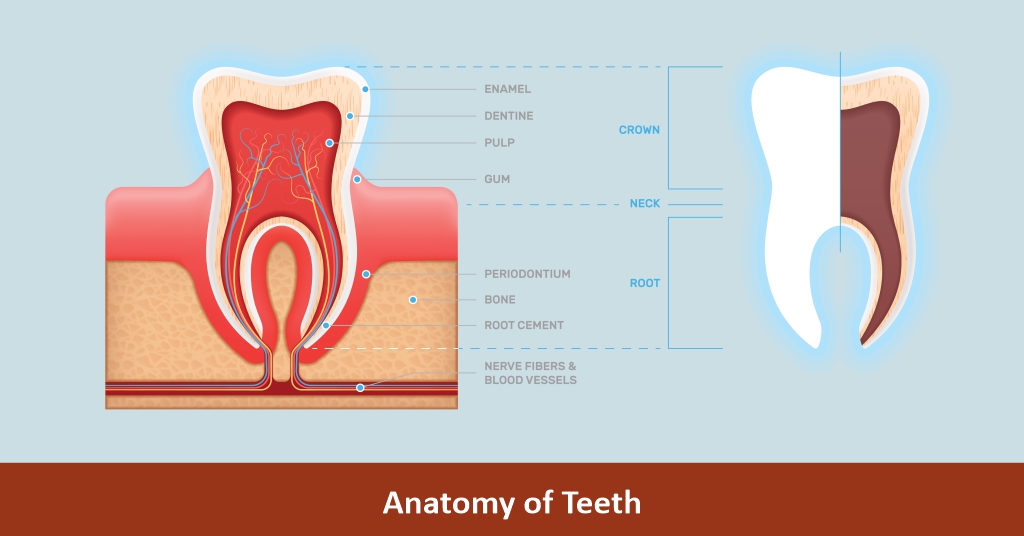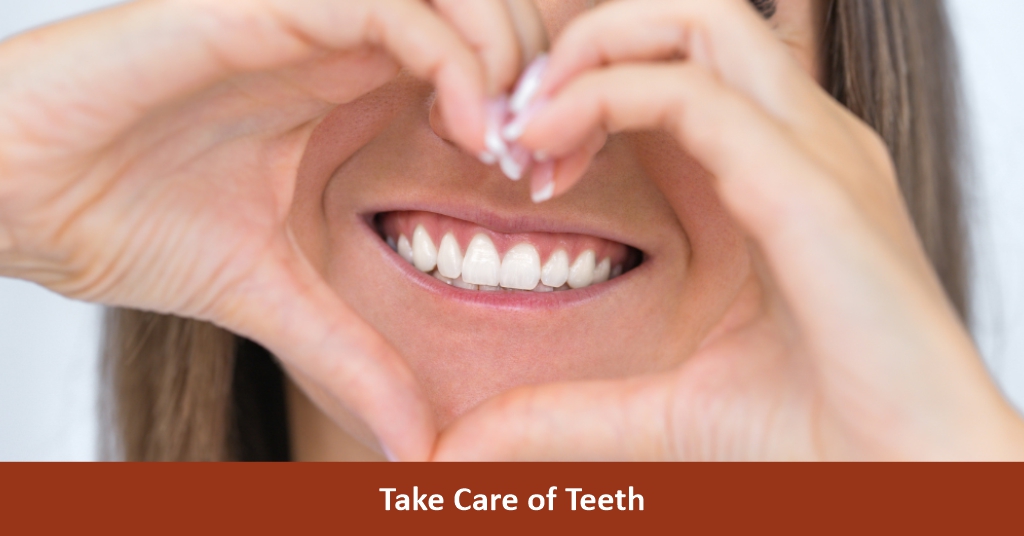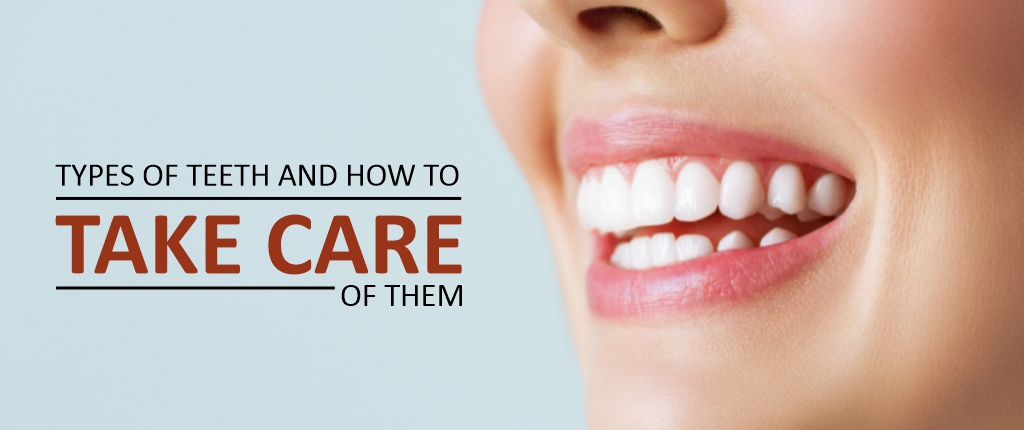As a human, the world has too much to offer. Not just in context to opportunities but also food. From Indian to Chinese, French to American the list of cuisines can go on and on. And as much as we all love the idea of munching on all the tasty items the world has to offer, it is necessary to take care of the source through which we would chew all the delicacies – our mouth, more specifically, our teeth. While we all know the importance of brushing our teeth twice a day, it is also crucial to know the composition and types of teeth along with the dos and don’ts. This will help keep your teeth healthy in the long run so you can keep eating whatever you want, whenever you want.
So, let’s dive into everything about teeth.
Anatomy of teeth

A human tooth is a combination of 4 dental tissues, out of which 3, i.e., – enamel, dentin and cementum- are hard tissues. While Enamel as we all know is the calcified, thin outer covering of the mouth, Dentin is the part beneath the enamel and cementum. Cementum is the hard-connective tissue which covers the tooth root.
The fourth and last one- pulp, is soft tissue. It is a non-calcified tissue located at the centre of the tooth and contains nerve tissues as well as connective tissue.
Types of Teeth
While the anatomy of all the 32 teeth present in a human mouth is the same, their functions differ. Using this difference, teeth are categorised into 4 types-
Incisors– These thin, flat-bottom, narrow- edged and sharp-shaped teeth are mainly for cutting and help us with the first bite. They are 4 in each jaw and are situated in the centre of both- the top and bottom jaw.
Canines– These strong and pointed “V” shaped teeth help with tearing and chewing food. There are 2 of these in each jaw.
Pre-molars– These can be identified due to their slightly flat shape with ridges on top. Along with tearing and chewing, it also helps with the initial grinding of the food. There are 4 pre-molars in each jaw.
Molars– Molars are stronger than pre-molars and are broad on the sides and flat on top. 6 molars in each jaw help with the crushing and grinding of food.
Problems surrounding oral health
With so many teeth performing a variety of functions day in and day out, it’s normal for them to face issues. This includes-
Decaying – Also known as cavities this issue occurs when acids of sugary, sticky food items destroy the enamel. Thus, causing plaque to form which eats away the enamel, causing cavities.
Bad Breath- As the name suggests, it’s referred to the unpleasant odour exhaled through the mouth. It happens when an individual fails to brush and/or floss correctly every day. Dehydration or consumption of food items with a strong smell like onion or garlic can also be the reason behind bad breath.
Gum problems- The accumulation of plaque affects the teeth and can also cause gum issues like gingivitis. This can cause bleeding or receding gums and painful chewing.
Yellowing- Teeth yellowing occurs when our enamel starts wearing off. It generally happens due to the wear and tear of age, but sometimes, certain food items can also cause yellowing with regular use.
Cracked tooth- Accidents, injuries, grinding teeth at night or biting into something hard can cause a crack, chip or break.
Sensitivity- When the teeth’ enamel gets damaged, the substance can reach the nerve endings, causing sensations known as sensitivity.
Take Care of Teeth

The list of teeth problems can go on and on but here we have tried mentioning the most common ones. Through this list, you might have noticed one thing- most of the issues occur due to problems faced by the enamel. So, it’s important to take proper care of the enamel along with other components of our mouth. And what is the first thing that comes into our mind while talking about oral health- brushing?
Brushing your teeth with toothpaste regularly can help you fight a lot of dental issues. Dantmani’s Ayurvedic toothpaste can be a great add-on to your brushing routine. Its ayurvedic blend of herbs is a great and natural way of keeping your teeth healthy and shiny.
Conclusion
While taking care of your teeth is not a herculean task, it’s important that you religiously follow the brushing and flossing- twice a day, for at least 2 minutes. Also, make sure to frequently change your toothbrush so that you can enjoy tasting the tastiest delicacies of the world without losing your teeth.
FAQs
What are the causes of teeth problems?
There can be the following causes of teeth problems-
- Sugary foods and drinks
- Frequent snacking
- Dry mouth
- Insufficient supply of fluoride
- Inadequate brushing technique
How do you know that a tooth is facing any issues?
If you are frequently facing pain, sensitivity, bad breath or the appearance of black or brown spots on your teeth, it can be a sign of a teeth issue.
How should one use Dantmani Ayurvedic toothpaste for best results?
Using Dantmani Ayurvedic toothpaste is the same as any other toothpaste. Start by wetting your brush using a little bit of water. Then take a pea-size amount of toothpaste on the head of the brush. Hold the toothbrush at a 45-degree angle and with gentle, short strokes brush each tooth and every corner of your mouth. After 2-3 minutes, rinse your mouth using plain water. Don’t forget to floss. Do this twice a day, and your teeth will be all good!




